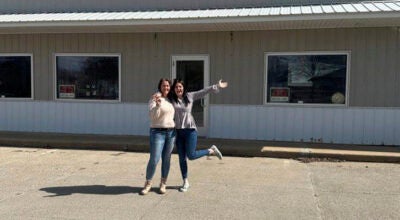The real story about retirement; Millions of baby boomers face financial crisis
Published 9:59 am Wednesday, October 21, 2015
By Katy Read
Minneapolis Star Tribune
Judy Davis works for a nonprofit organization helping homeless families overcome obstacles, find a place to live and bring stability to their children’s lives. “Kids are my passion,” Davis said. “Anything I can do to help kids, that’s what I’m here for.”
The St. Paul woman is happy with her job and plans to continue working as long as she can. Which is good because, at 57, Davis has saved very little money to live on in retirement.
“Do I live paycheck to paycheck? Pretty damn close,” she said. “If I had to retire I would be broke pretty soon. I could probably survive six months to a year.”
Scary though her situation sounds, Davis is far from alone. As 76 million baby boomers head into retirement, well over half, according to some estimates, don’t have enough money to last throughout their old age. The nation is hurtling toward a retirement financial crisis.
The National Institute on Retirement Security (NIRS) calculates that two-thirds of households age 55-64 have savings equal to less than their annual income. A third have no savings at all.
Even the more optimistic projections are grim. The Employee Benefit Research Institute (EBRI) estimates that 57 percent of boomers are prepared to support themselves in retirement at their current standard of living. But that leaves 43 percent who aren’t — including millions of middle-class and low-income Americans, and even some with higher incomes, who could run through their savings within 20 years of leaving work. Many sooner.
The outlook is especially dire for women, who on average have shorter work histories, smaller paychecks and longer life spans, as well as for people who will eventually need expensive long-term care. Minorities are disproportionately at risk. Households of all ages are dangerously short on savings, though younger people have more time to try to catch up.
Although the problem is predicted in mountains of research conducted by multiple organizations, it’s still low-profile as looming crises go, not widely discussed in the media or over kitchen tables.
“It’s clearly a problem that people haven’t focused on, that the state of Minnesota hasn’t focused on, as an issue,” said Jay Kiedrowski, a senior fellow at the University of Minnesota’s Humphrey School of Public Affairs who specializes in public finance. He likened it to other impending disasters, like climate change, for which governments and the public are insufficiently prepared.
According to Fidelity Investments’ oft-cited guidelines, people should aim to retire with savings equal to eight times their salary. To be on track for that target, Fidelity says people should have set aside five times their salary by age 55.
Try $14,500. That’s the median retirement-account balance among households age 55 to 64, according to the NIRS. And the further down the income ladder, the bleaker the outlook. “The dollars have really been concentrated at higher income levels,” said NIRS Executive Director Diane Oakley.
The NIRS calculated that as of 2010, “the top 5 percent controlled 54 percent of the assets. The top 10 percent controlled 70 percent of baby boomer assets. The top 25 percent controlled 89 percent. The bottom half only had 3 percent.”
Surveys find people do worry that their own savings are insufficient. But the public doesn’t grasp the magnitude of the problem, said Jack L. VanDerhei, research director at the Employee Benefit Research Institute.
“They haven’t seen their elderly neighbors running out of money yet,” VanDerhei said. “It’s going to take years’ worth of stories on the evening news, showing the plight of these retirees running out of money.”
So far, people are seeing just the opposite. Many boomers have watched their mothers and fathers retire comfortably. Retirees in their late 60s and early 70s — older boomers and people born during World War II — are, as a group, in notably good shape financially.
“That’s part of the reason why people haven’t fully come to grips with some of the changes that have occurred,” said Andrew Eschtruth of the Center for Retirement Research at Boston College and co-author of “Falling Short: The Coming Retirement Crisis and What to Do About It.” “They think, ‘Oh, my parents retired in their early 60s and they seem to do pretty well, things will probably work out for me.’ “
What many don’t consider is how dramatically the retirement-funding landscape has changed over the past couple of decades. The biggest difference is the shift from defined-benefit plans, or pensions, to defined-contribution plans, like 401(k)s and IRAs. Employers began to eliminate or freeze pensions because market volatility was jeopardizing pension-fund investments. Meanwhile, 401(k)s were introduced, offering some advantages; for one, they were portable from one job to another. But the move from guaranteed lifetime income to individual investment accounts shifted risk and responsibility from companies to workers — not just to save for retirement, but then to spend those savings at a sustainable rate. Both are vulnerable to circumstantial problems and ordinary human misjudgment.





